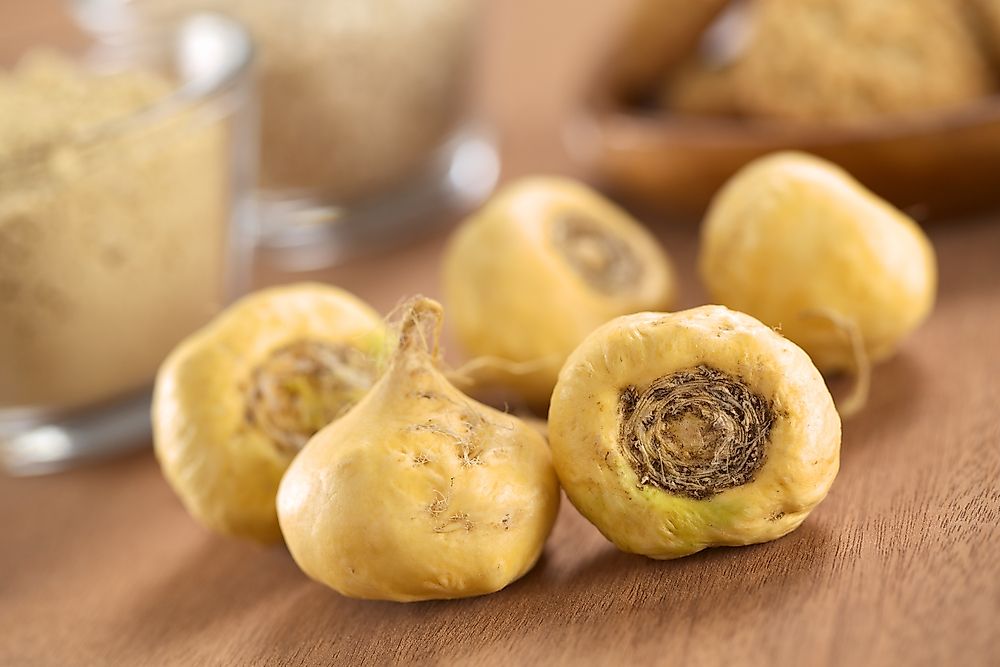What Is Maca (Lepidium meyenii) And Where Is It Grown?

The scientific name of maca is Lepidium meyenii. It is a herbaceous plant that takes two years to complete its lifecycle. Maca belongs to the Brassicaceae or Cruciferae family. Some of the plants which are closely related to maca include turnips and radishes. The crop is native to the Andes Mountains of Peru. It is cultivated in Peru’s highlands for culinary and medicinal purposes.
Characteristics
Maca has a fleshy hypocotyledonous stem which fuses with a taproot. Its growth habit, proportions, and size are almost similar to those of turnips and radishes. Its leaves are thin and frilly. They bud at the soil surface and grow to a maximum height of between 4.7 and 7.9 inches. The sprout takes the shape of a rosette, and new leaves grow continuously from the center to replace outer dying leaves. Maca is a flowering plant, and its flowers are self-pollinating. It bears tiny capsule shaped fruits, each of them containing two tiny ovoid seeds that are reddish-gray. The plant grows from these seeds.
Maca is the only member of the Lepidium genus with a fleshy hypocotyl fused with a taproot. The root varies in shape and size, and native growers use its root color to differentiate the four varieties of the plant. The colors may be cream-yellow, purple, half purple, or black depending on the level of anthocyanins in the plant. Cream colored varieties are the most widely cultivated in Peru because of their size and enhanced sweetness. Hypocotyls also range in color, and they may be red, cream or gold, blue, purple, green, or black. All these varieties are considered to be genetically unique.
Cultivation
Maca is among the most tolerant crops. Its natural environment is at 11-12°S latitudes and high altitude areas which are at elevations of 12,500 – 14,400 feet above sea level. It is mainly grown in Peru, a few parts of Brazil, and the high altitudes of the Andes in Bolivia. Farmers sow the seeds when the rainy season begins in October. Seedlings take one month to emerge. The crop reaches its flowering stage in May or June, and by this time, the upper part of the taproot and lower part of the hypocotyl have grown in size. The hypocotyl is ready for harvesting after another 260 to 280 days. If harvesting does not take place after this period, the crop goes into a period of dormancy for two to three months after which it forms a generative shoot. Seeds develop on the shoot, and they take five months to ripen.
Uses of Maca
The root of Lepidium meyenii has many health and nutritional values as well as commercial uses. In Peru, one of the ways of preparing maca includes roasting it in an earthen oven known as huatia. One can also mash the roots and boil them to produce a sweet and thick liquid which when dried and mixed with milk, forms porridge. When ground, maca’s roots produce flour for cakes, breads, and pancakes. Supplement industries in Peru and Bolivia process and export this flour. Maca is also used in beer production, in the preparation of jams, soups, and empanadas and its leaves are sometimes cooked or used to prepare salads.











